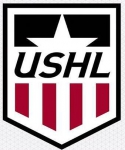Grenoble dominates Angers to clinch 9th Ligue Magnus title
Brûleurs de Loups seal the title at home with dominant Game 5 victory as veterans Hardy and Fleury bid farewell to the ice Read more»

Did you find any incorrect or incomplete information? Please, let us know.
| # | Player name | Pos | Team | GP | G | A | P | PIM | +/- |
|---|---|---|---|---|---|---|---|---|---|
| 1. |  Greg Johnson Greg Johnson | C | Thunder Bay Flyers | 47 | 32 | 64 | 96 | 4 | |
| Show all stats for season 1988-1989 | |||||||||
The United States Hockey League (USHL) is the country's top junior hockey league, classified as Tier I. Like comparable entities such as the Canadian Hockey League (CHL)'s three member leagues, the USHL offers a schedule of high-level, competitive games for top players aged 16 to 20. Unlike the CHL it does not pay a stipend to its players, who thus retain amateur status and are eligible to play in the NCAA.
USHL teams, which are typically located in mid-sized cities like Green Bay, Wisconsin and Lincoln, Nebraska, pay for all uniforms and equipment. Players live with local families, who receive a small stipend for food expenses, and either continue school or work part-time jobs.
Precursors to this league were:
American Amateur Hockey League (1947-52)
Central Hockey League (1952-53)
Minnesota Hockey League (1953-55)
Central Hockey League (1955-60)
The American Amateur Hockey League was established in 1947 as the Minnesota-based American Amateur Hockey League with teams in Minneapolis, Rochester and St. Paul.Since its debut, the league has progressed and changed its name several times: In 1952, it became the Central Hockey League; then the next season it became the Minnesota Hockey League; and in 1956 the name was changed again to the Central Hockey League. In 1961, it adopted its present name, the United States Hockey League (USHL), but operated as a minor professional league until 1979.
[edit]1961-79
The United States Hockey League (USHL) operated as a senior ice hockey league 1961 to 1979.
The USHL welcomed the first female professional hockey player in 1969-70, when the Marquette Iron Rangers signed Karen Koch.
By the late 1970s, the USHL had fallen on hard times. In the summer of 1977, clubs from the recently folded Midwest Junior Hockey League contacted the USHL. A unique merger was formed, with the three junior teams (Bloomington Junior Stars, Austin Mavericks, St. Paul Vulcans) and three remaining pro teams (Sioux City Musketeers, Waterloo Black Hawks, Green Bay Bobcats) gathered under the USHL banner. League governors decided on a two-division format, with the junior-aged teams in the Midwest Division and the professionals in the U.S. Division. The teams played an interlocking schedule that was, predictably, dominated by the professionals. The USHL's split existence would last just two seasons. The minor-pro wing of the league folded following the 1978-79 season, providing junior hockey operators with the opportunity to redefine the circuit. The 1979-80 season was the league's first as an entirely junior arrangement.
The league's last season as a senior hockey league was 1978-79. During this final season the league comprised seven teams in two conferences. The U.S. Conference (with the Green Bay Bobcats, the Sioux City Musketeers and the Waterloo Black Hawks); while the Midwest Conference (with the Anoka Nordiques, the Austin Mavericks, the Bloomington Junior Stars, and the St. Paul Vulcans. All seven teams were made up with players categorized as "Senior Amateur".
Following the 1978-79 season the senior league teams in the U.S. Conference folded and the USHL became an all-junior league the following season.
Adam Huska named the 2016 USHL Goaltender of the Year
The United States Hockey League announced today that Gamblers Slovakian goaltender Adam Huska has been named the 2016 USHL Goaltender of the Year as determined by a vote of League general managers.
Huska played in 37 games for the Gamblers and finished with a record of 26-9-2, leading the Gamblers to the number two seed in the Eastern Conference. He made 880 saves throughout those 37 games, and posted a 1.82 GAA and a .931 SV% in that span. Both of those marks led the league, and the 1.82 GAA is the best mark in USHL Tier 1 history (2002-present)
(09 May 2016)Kevin Lindskoug named USHL Goaltender of the Year
Swedish Kevin Lindskoug was named USHL Goaltender of the Year.
With Muskegon Lumberjacks, Lindskoug posted a 23-18-6 record with a 2.49 goals-against-average and .923 save percentage with an impressive number of eight shutouts.
Lindskoug signed to play with Rogle of Allsvenskan next season
USHL Expands Schedule for 2012-13
The United States Hockey League today announced that the USHL Board of Directors has approved an increase in the League’s regular season schedule from 60 to 64 games beginning with the 2012-13 season.
Each USHL Member Club will play 32 home games and 32 road games in 2012-13, an increase of two home and two away contests over the 30 home, 30 road game schedule each team is playing this season. The announcement marks the first time the USHL has changed the number of games each team plays in the regular season since it was first designated by USA Hockey as the only Tier 1 junior hockey league in the United States in August 2002
 Canada (2),
Canada (2),  USA (1)
USA (1)Brûleurs de Loups seal the title at home with dominant Game 5 victory as veterans Hardy and Fleury bid farewell to the ice Read more»
The transnational influence of European NHL players has become a transformative force in reshaping hockey development programs across their home nations. By importing NHL-caliber training methodologies while funding grassroots initiatives, these athletes are driving measurable growth in participation and competitive outcomes. ... Read more»